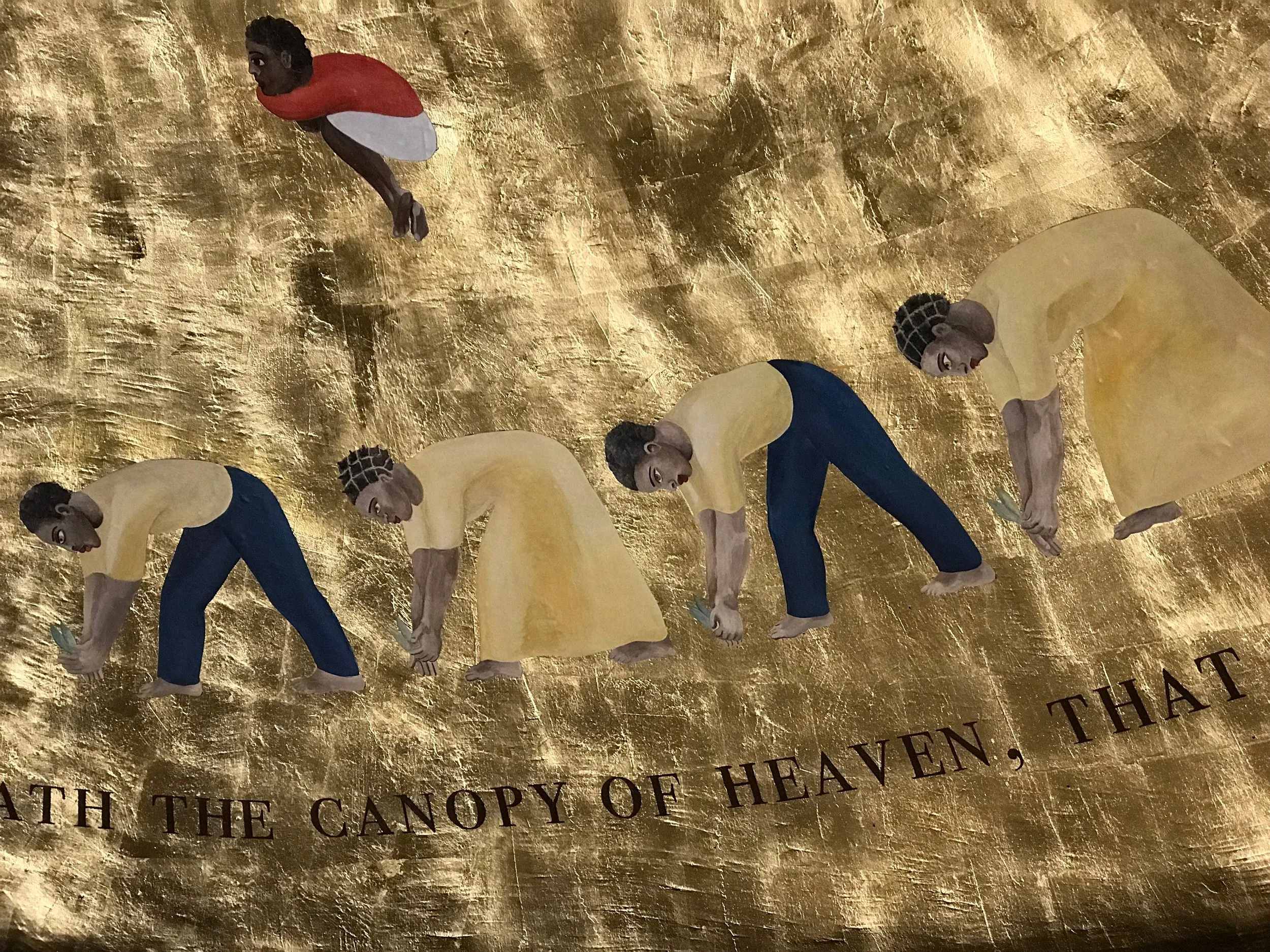Witness, University of Kentucky, Memorial Hall, 2018
Witness is a site-specific installation at the University of Kentucky. My hope was to deepen the dialogue around a controversial New Deal-era fresco created by Ann Rice O’Hanlon depicting a history of Kentucky that many believed sanitized the portrayal of slavery and presented stereotypes and caricatures of people of color. For this project I decided to reproduce the mural’s African American and Native American figures, inserting these images onto the ceiling of the vestibule, which was also gold-leafed. I wanted to reference sacred paintings and churches from the Byzantine and Renaissance periods. This effectively transported these anonymous figures into a heavenly space. Around the base of the dome is a Frederick Douglass quote: “There is not a man beneath the canopy of heaven, that does not know that slavery is wrong for him.”
Four portraits of important individuals in Kentucky’s history are presented in the circular medallions below the ceiling. They include Chief Red Bird, a Cherokee who lived among white settlers in Clay County until his murder by two Tennessee men; Charlotte Dupuy, who was an enslaved African-American woman who filed a freedom suit in 1829 against her master, Henry Clay, then the country’s secretary of state; Peter Durrett, a former slave and preacher who founded African Baptist Church in Lexington, Kentucky, in 1790; and Georgia Davis Powers, the first African American to serve in the Kentucky Senate, sponsoring bills prohibiting employment discrimination, and sex and age discrimination. Dupuy and Durrett are illustrated as silhouetted heads, a popular way of making portraits before the invention and common use of photography in the 1800s. Between 1800–1860, professional and amateur artists would either paint or cut black profiles out of paper.










